Nowa Huta: Poland’s forgotten attempt at a socialist utopia
The most ambitious new town ever built is now a rundown district of Krakow. Mick O’Hare travels east to find out what happened to this ‘workers’ paradise’

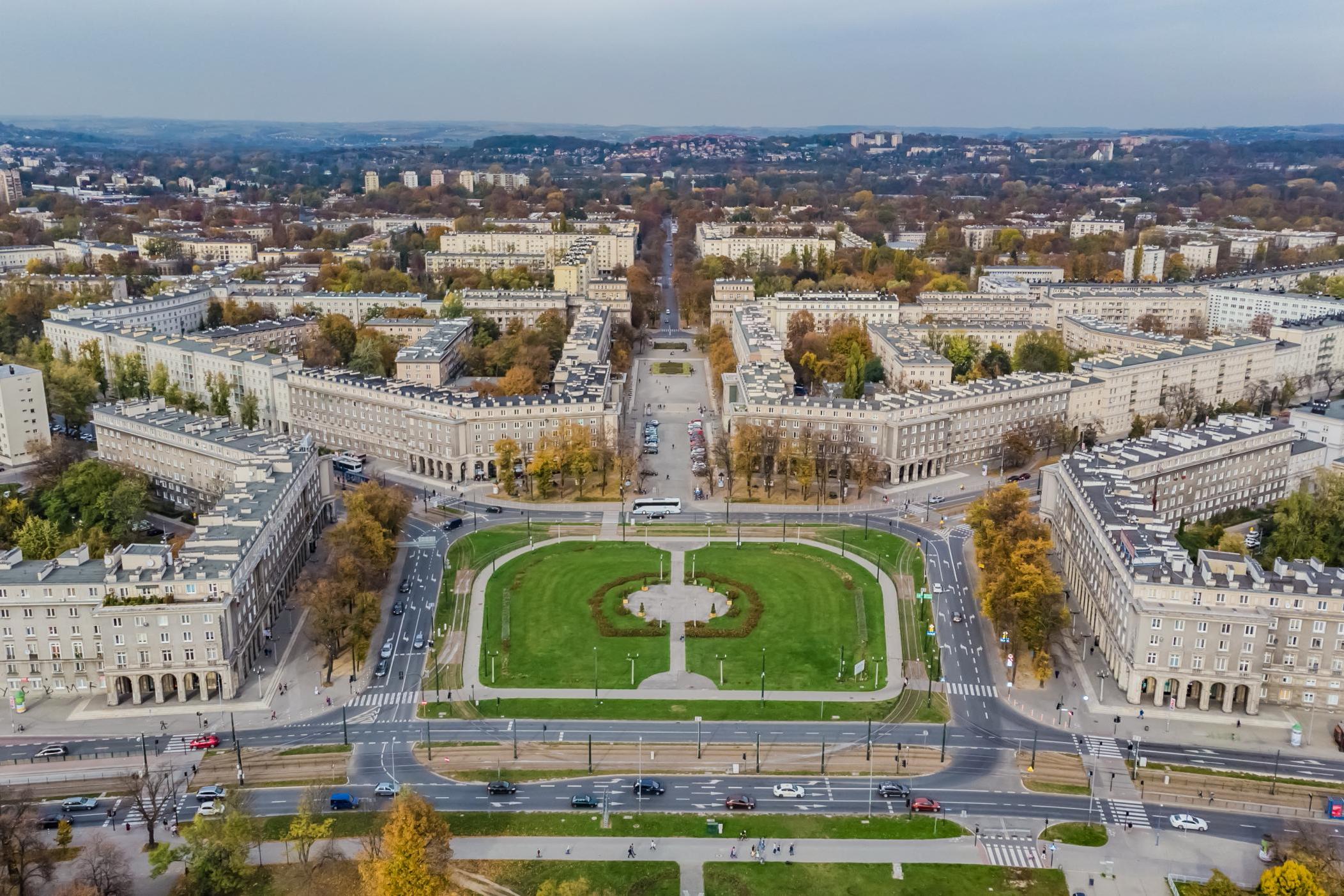
Postwar Britain got Basildon, Hemel Hempstead, Runcorn, Milton Keynes, Cwmbran and East Kilbride. But Poland got Nowa Huta.
Born of the same era that gave Britain the NHS and the modern welfare state, the New Towns Act of 1946 was an ambitious programme of community planning.
These new towns would be a remedy for overcrowding in large, industrialised cities, prevent the seemingly endless outward growth of London and, crucially, provide homes for those lost to wartime bombing and fire. It was called planning the peace.
In total 27 were built in the UK, with many more across Europe as nations reconstructed themselves from the devastation of conflict. They were mostly modern, self-sufficient and, crucially, compact.
But not Nowa Huta. This was on a different scale: the new-town benchmark, the heir to the utopia that was expected and predicted – by the communists of eastern Europe at least – to emerge from their annihilation of fascism and capitalism. It was to be the daddy of new towns the world over.
Nowa Huta was the socialist Eden turned into concrete, brick and steel. Especially steel. Nowa Huta means “new steel mill” or “foundry” in Polish and the town, now effectively a suburb of Krakow and a tram ride east from the historic city, was built to serve the Vladimir Lenin Steelworks that was being constructed alongside it and which opened in 1954.
Tourists travel to Krakow to see its huge market square surrounded by mediaeval architecture, and walk its cobbled lanes and the city wall. They visit the Wawel Castle where Poland’s kings once lived and sit in the sun in Planty park, the green doughnut surrounding the ancient city heart. Others, mainly from the UK on stag and hen weekends, just go for the cheap booze in the old town bars.
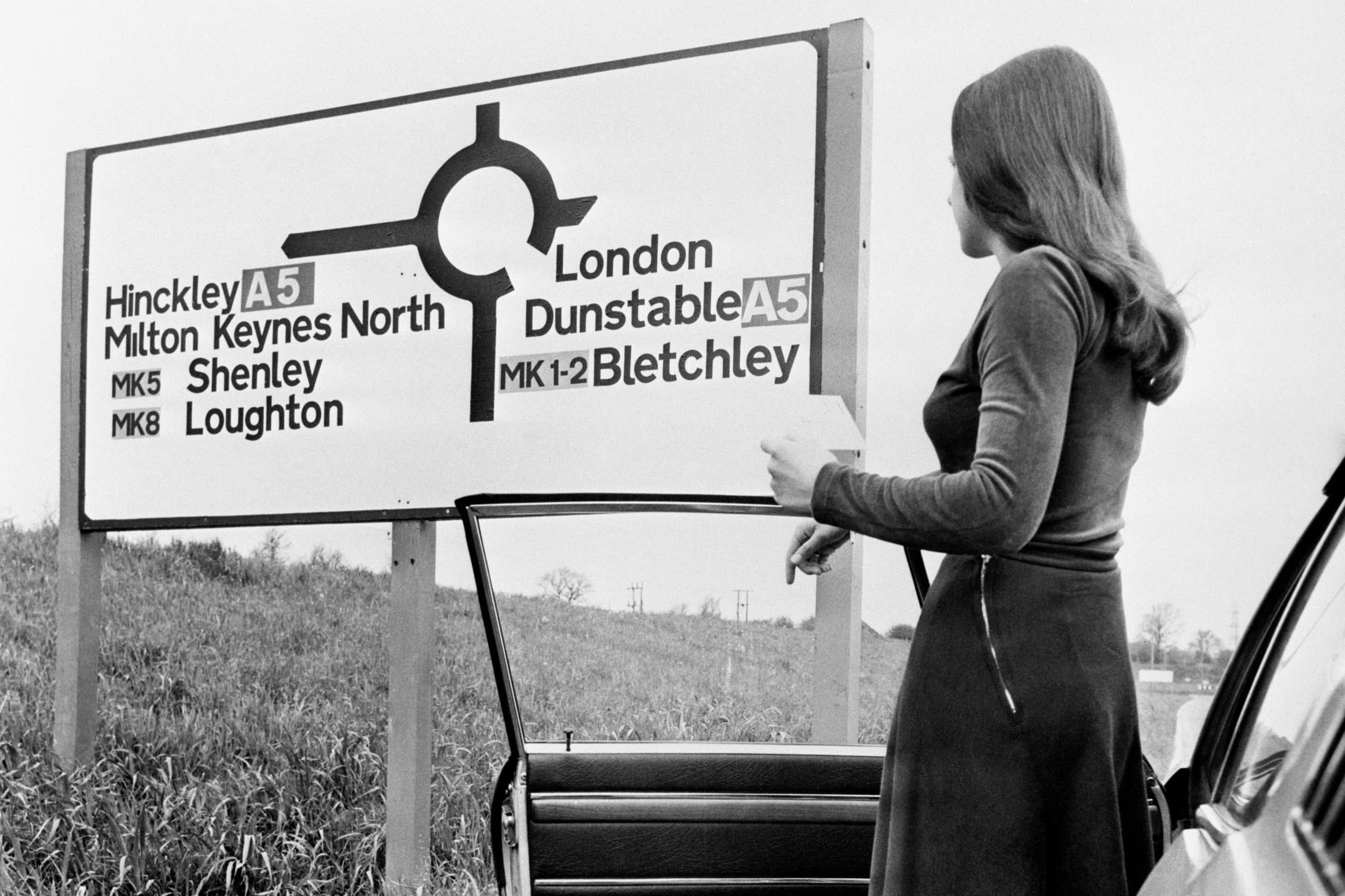
But social historians find this sort of stuff quite boring. Their hedonism lies elsewhere among the planned streets and grandiose utilitarian architecture of Nowa Huta. As soon as they hop off trains at Krakow’s Głowny station they are just itching to jump on a number four tram. And, at least apocryphally, they would be following in the footsteps of Cuban revolutionary leader Fidel Castro who visited in 1972 and couldn’t be bothered with the imperialistic pageantry of castles and cathedrals. He wanted to get to Nowa Huta too.
“I remember his visit,” says retired 69-year-old Alicja Puchalina. “He walked around town looking just like he did in all the photographs you ever saw of him. We were told he was impressed. It might even have been true. And of course they showed him all the grand buildings which were put up when Nowa Huta was first planned. But my father said: Well he might have got a different impression if he had seen our bathroom.’ And that’s because not everything in Nowa Huta had lived up to its promised intent.”
But that intent was certainly bold, at least at the beginning. It was to be a workers’ paradise free from the toil of slaving for free-market overlords, creating an idyllic socialist lifestyle for the steelworkers.
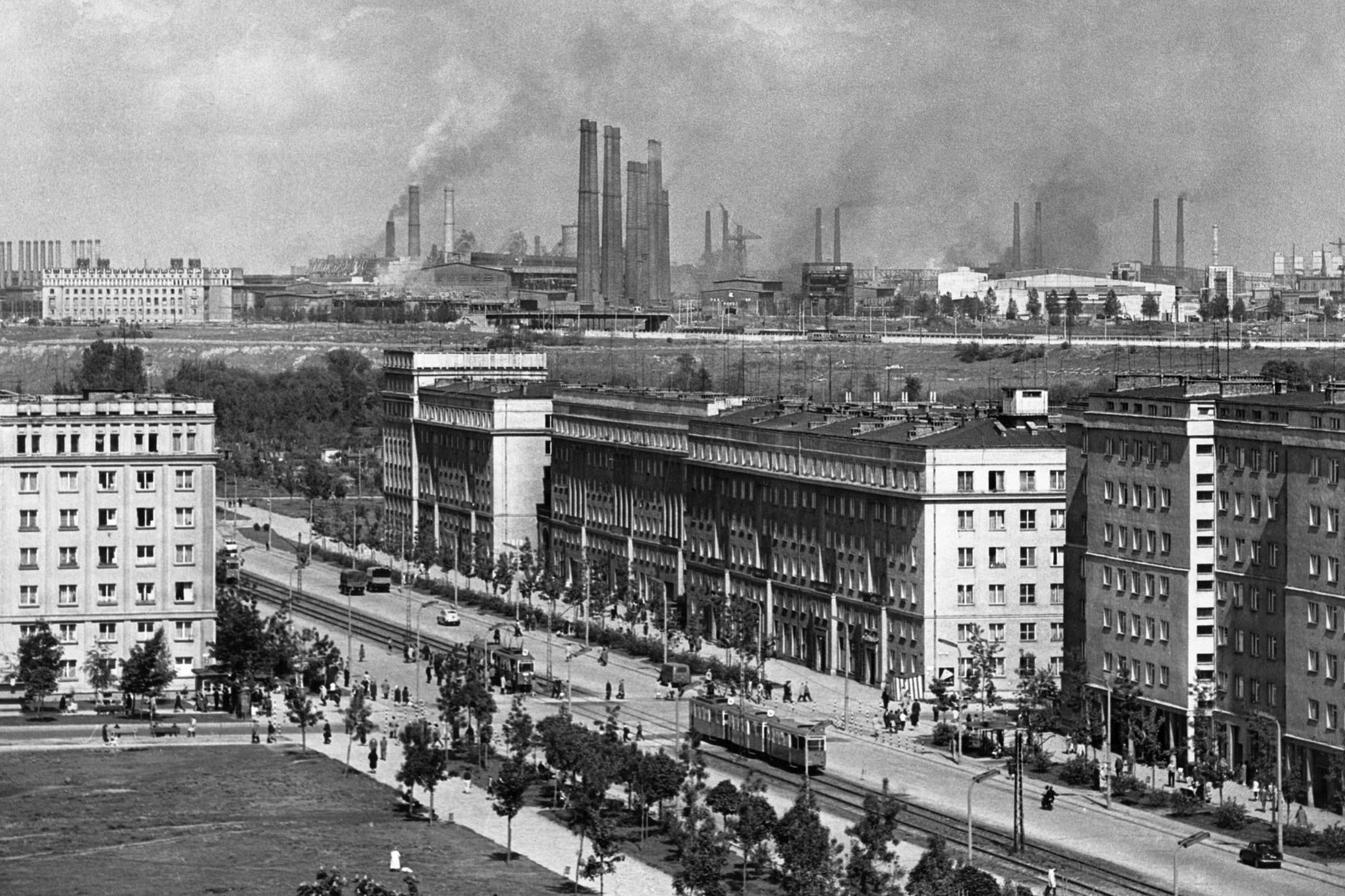
And it was to be huge – it is currently home to more than 200,000 people – with a grandeur to match London or Haussmann’s Paris, with hints of planned American city grids such as New York, but also it was also to be an exemplar of “deliberate social engineering”. And for many it fulfilled that aspiration. Jobs were guaranteed by the government and many people, deprived either by the almost feudal system of pre-war Poland or by the privations of the Nazi occupation, indeed found that it verged on utopia.
“My grandfather was essentially a peasant,” says Czesław Kaczmarek, 51, an office worker in central Krakow. “He came to Nowa Huta as soon as accommodation became available, to work in the steel factory. His flat had heating and running water and a view over parkland and he loved it. He and my grandmother moved there in their twenties and never left. Even when the buildings and infrastructure began to decay he used to say that it was still a paradise compared to what he left behind.”
For the first time my grandparents had access to education, free healthcare and leisure time
“For the first time my grandparents had access to education, free healthcare and leisure time,” adds Anna Tokarczuk, a healthworker in nearby Rabka.
The city was a project of socialist realism, the enforced movement that defined art, including architecture, throughout the Soviet Union and eastern Europe from 1949. The movement was intended to embed socialist principles and the new order into the minds of the population, and architecture was a key part of the strategy.
Aesthetics weren’t enough, and although classical and renaissance themes were incorporated, buildings – especially public ones but also communal homes – were built to impinge on the consciousness of the public, invoking subservient awe. And Nowa Huta was this ten times over. Although the socialist realism doctrine eventually faded after the demise of Soviet leader Joseph Stalin in 1953 as critical opinion turned against it, the city centre of Nowa Huta is still regarded as a classic example. It is one of only two totally planned-from-new socialist realist cities to be built (the other is Magnitogorsk in what is now Russia).
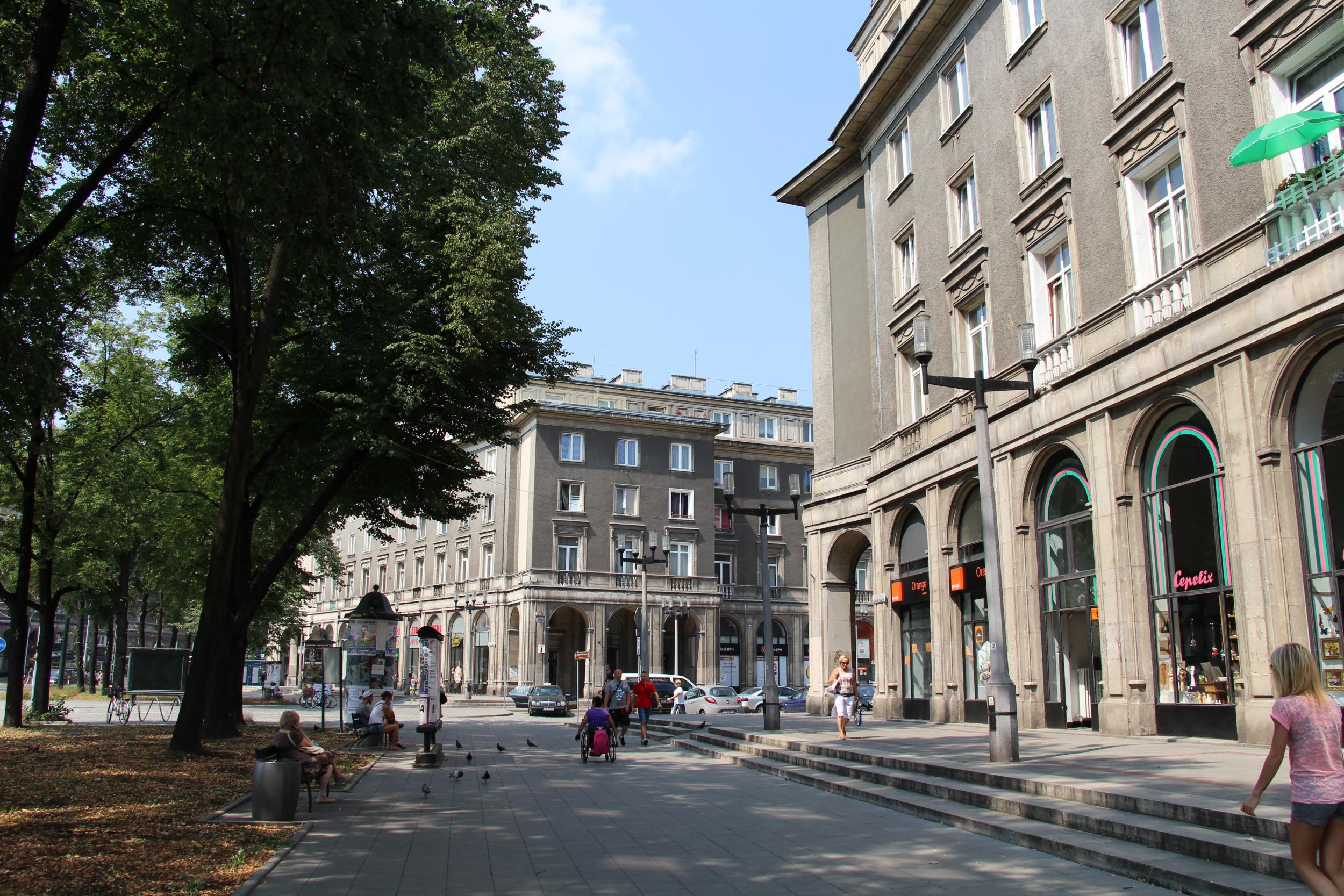
Nowa Huta has been described as “Orwellian” by critics, but that is too cruel. It was pragmatic, for sure, and symmetrical – the practitioners of socialist realism loved symmetry – but it was built pretty much with the citizen in mind. Unlike fairytale Krakow itself, this was utilitarian architecture.
Add in the fact that Krakow itself was frequently a hotbed of dissent towards the Polish communist authorities and the argument can be made that Nowa Huta was the government demonstrating to the dissident city just what could be achieved through socialism – it was to be the perfect working-class metropolis. Whether that is myth or truth it is fair to say that Krakow was bourgeois but Nowa Huta was proletarian.
Work began in 1949, starting with the block of flats on Mierzwy Street where a plaque marks the spot, and the core of what is still the centre today was constructed between 1949 and 1955. By 1956 Nowa Huta had a population of more than 100,000, many coming from poorer, rural areas of Poland and quickly forming communities in the apartment blocks with people from similar regions and backgrounds, as well as taking on the “socially engineered” wider communal sense of Nowa Huta.
Many brought families of working age but also elderly relatives which helped to fulfil one of the architects’ aspirations: “neighbourhood units”, self-contained with facilities such as shops, gardens and kindergartens. For many it was their first experience of urban life, of heated homes, running water, electricity, cars, streets, trams, shops, cafes… “My grandparents had grown everything themselves on their small plot of land,” says Kaczmarek. “They took water from a stream and burnt wood and coal in their single- roomed cottage. They didn’t know what electricity could do. They had never seen a tram before.”
Plac Centralny (now, ironically, Ronald Reagan Square, and previously Joseph Stalin Square) is the city’s focus, the suburbs set out like a fan with radiating boulevards heading northwest, north and northeast, while to the south is meadowland. The city’s triangular shape was both a product of socialist realist design and the constraints of local geography. Plac Centralny was the city’s meeting place, arcaded and surrounded by huge apartment blocks, with the grand mall of Aleja Roz (or Roses Avenue) leading away to the north.
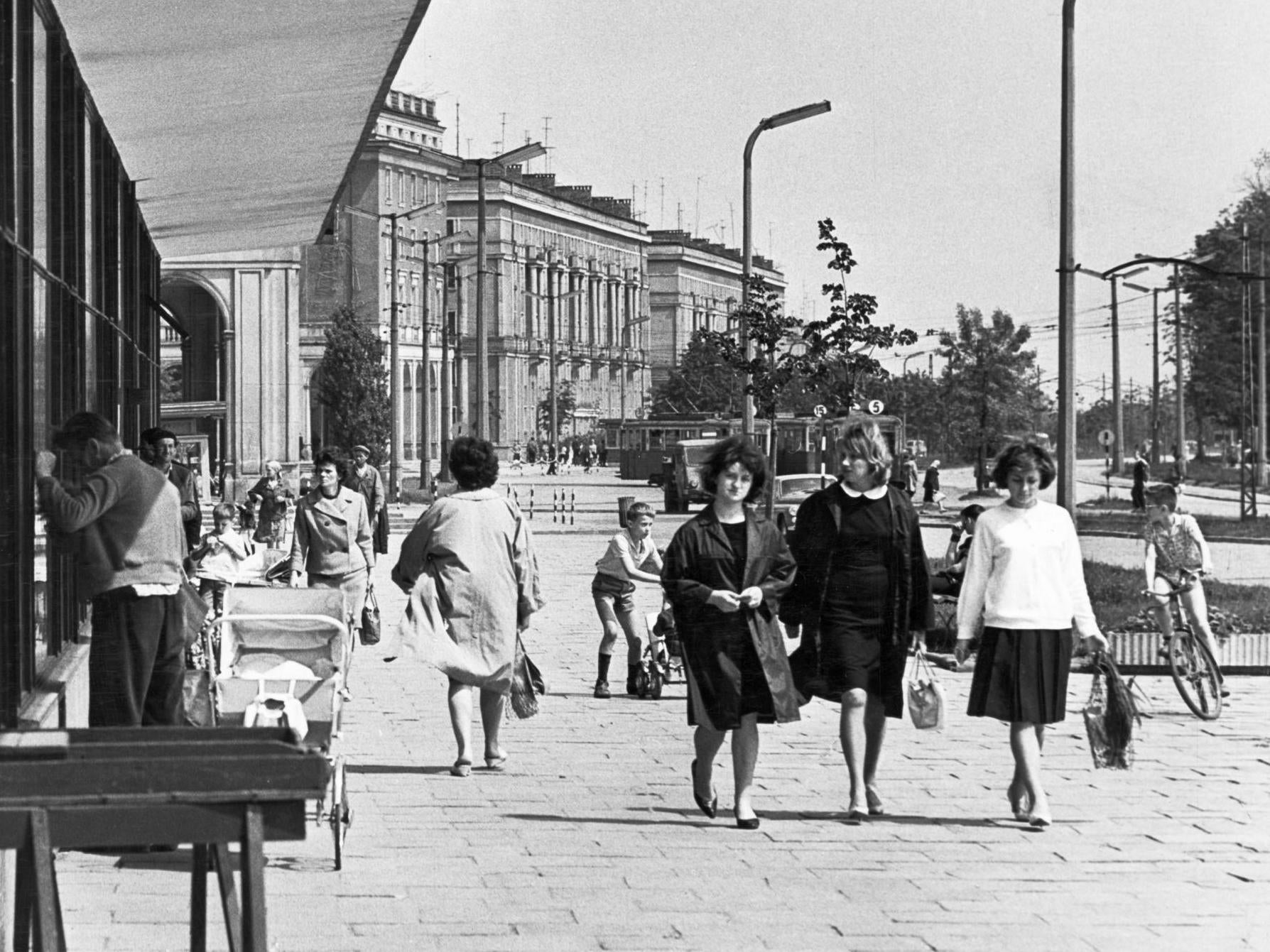
The lead architect Tadeusz Ptaszycki also planned another square at Ratuszowy, but this was never built after – as was often the case with huge socialist infrastructure projects – budget cuts set in. Ratuszowy means town hall in Polish, but there is no town hall here. Instead it is a park. The theatre that was to be built opposite the town hall also never appeared, although in 1955 the Ludowy Theatre opened elsewhere in town as did a number of cinemas, sports stadiums and libraries. Nowa Huta was intended to cater for its workers’ cultural and leisure pursuits too.
When the Zeromski Hospital was completed in 1954 it was the most modern hospital in Poland and an astonishing piece of architecture with 17 pavilions, grand staircases and an impressive facade, almost Baroque in appearance. A planned reservoir to the south of Plac Centralny was never built but instead a smaller combined recreational and water-supply park was constructed at Zalew Nowochucki, and it’s still used today for both.
And there is another story behind those wide boulevards, parks and open spaces. If Nato had ever launched an attack on the Warsaw Pact the city was designed as a defensive position. Tanks could move easily down the open streets, the many trees could soak up a nuclear blast, the wide boulevards could stop the spread of fire after bombing, and the outskirts were designed to be turned into a fortress with open lines of fire for troops occupying the apartment buildings. The city has nuclear shelters in abundance, most located under the apartment blocks, but the biggest being beneath the Zeromski Hospital.
It was a city with idealism and motherland at its heart, but did Nowa Huta live up to its purpose? Tokarczuk’s grandparents believed that it did, but as ever, there are opposing views. “It’s a terrible place today,” says Jerzy Okolski, 29, who was brought up there. “Full of unemployed alcoholics and muggers. You wouldn’t go there unless you had to. And you definitely wouldn’t want to visit if you were black, or a gypsy or Jewish,” he adds looking a little shamefaced.
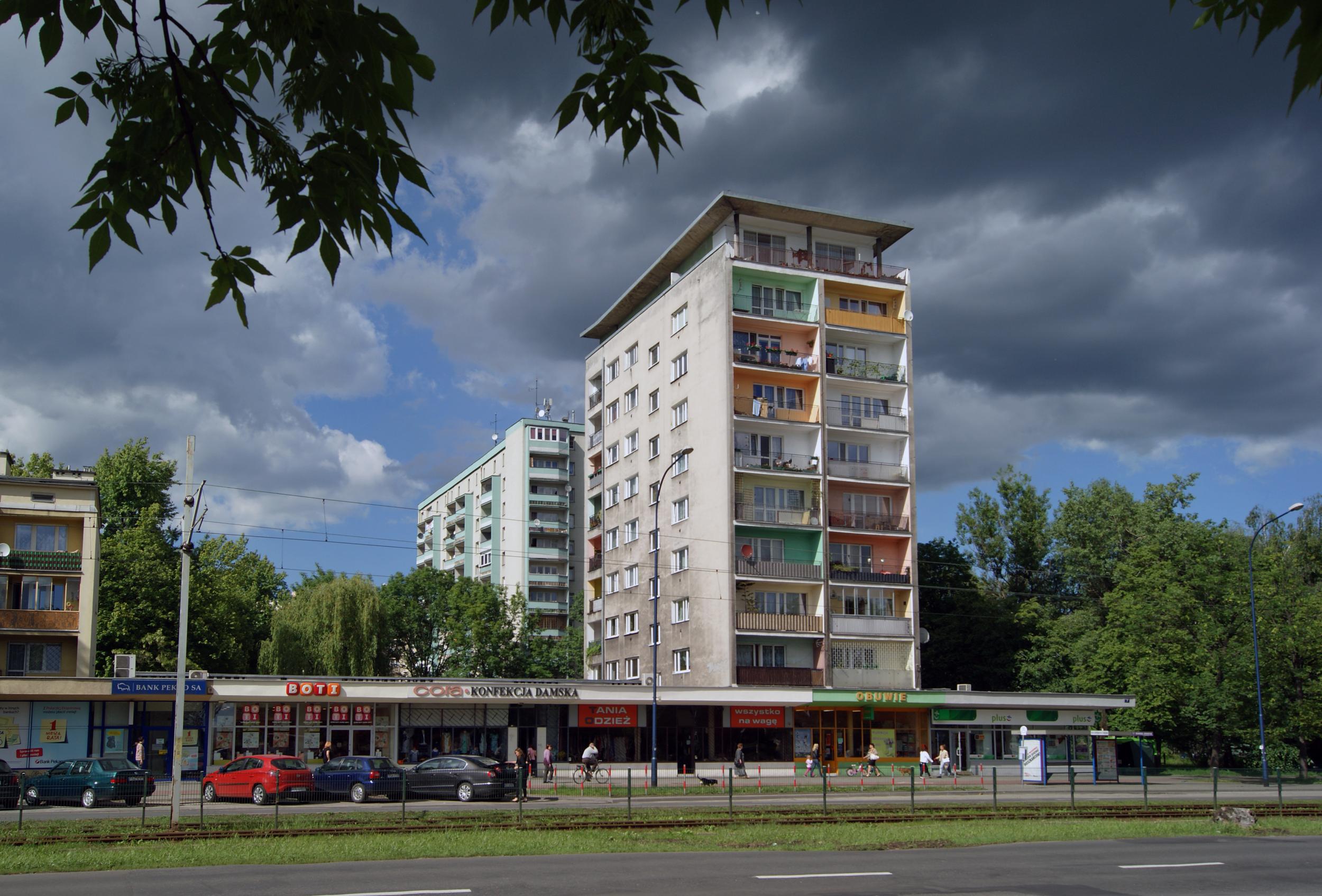
The city gained a reputation as a hotbed of the Polish skinhead movement. In his online article for the International New Town Institute, Dutch writer Joris van Casteren wrote “these days, Nowa Huta is inhabited by hooligans unemployed and retired people”. Others disagree. “Show me a Polish town, or a town anywhere in Europe that doesn’t have its problems,” says long-time resident Paweł Nowak. “Nowa Huta is no worse, but it’s convenient to knock it, especially when you have ever-so-beautiful Krakow just next door,” he adds by way of sarcastic comparison.
Unfair or not, the town began to have problems right from the outset. The plumbing began to give way soon after construction, electricity would fail, the lifts (if they were actually installed) stopped working, the promised phones and radios never arrived, the drains couldn’t cope… it wasn’t always utopia.
It’s a terrible place today. Full of unemployed alcoholics and muggers. You wouldn’t go there unless you had to
Some of the groups from disparate parts of Poland had historical rivalries that continued after moving to the city, and some people of former farming stock were wont to keep pigs and chickens in their flats, leading to disputes with neighbours. And as the money dried up the apartments built away from Plac Centralny were no better than the blocks of flats you’d find in the poorer parts of any city, planned or otherwise.
Cost trumped idealism as it frequently does whatever the politics. In the end some of the rooms didn’t even have windows. And although the steelworks was built to the east of the city to take advantage of west winds blowing smoke away from residences, the 125 factory chimneys didn’t always play ball. “I grew up in Nowa Huta in the 1970s. You could always smell the steelworks,” says Piotr Banasiak, who now lives in London.
“We had lessons at school on how we should be proud of the town and what it represented. But it was all propaganda. Our toilet was blocked so often that we used a bucket and chucked it in the drain outside.” In many ways the town was a victim of its success, more people lived there than it was intended for and the sewers, water systems and electricity substations couldn’t always cope.
We had lessons at school on how we should be proud of the town and what it represented – but it was all propaganda
Stanisław Juchnowicz, now 96, was one of the architects of Nowa Huta and he is still proud of the city today, “The concept was a good one,” he says. “That its execution was not perfect, and that it was not maintained today, is no fault of the concept,” he argues. “We were limited by socialist realism, but we wanted life to be good for the inhabitants.”
But something major was overlooked when the city was designed. There was no church and Poland, especially back then, was overwhelmingly Catholic. The newly emancipated workers had nowhere to worship. Communism was an atheist ideology and the government did not want workers wasting their time on mumbo jumbo and directing (and diluting) their ideology elsewhere.
Others have argued that it was not a deliberate ploy by the government. The church simply fell foul of the budget cuts,they say, in a similar way to the town hall. True or not, the residents demanded a church for the city, and campaigned for years, first erecting a cross which the authorities removed, celebrating Christmas mass in the open air, and finally starting to build one themselves in 1969.
The first brick was laid by Cardinal Karol Wojtyła, the man who would go on to become Pope John Paul II, and the church, the Arka Pana (or Lord’s Ark), was completed in 1977.
Even after the ark-shaped church was complete, and despite its outward socialist pretensions, Nowa Huta remained a city with a reputation for anti-government dissent. Where Plac Centralny and Aleja Roz intersect a statue of Lenin was erected. It’s no longer there – but even before the fall of eastern-European communism it was often the site of anti-government protests, frequently bombarded with paint, graffiti and even explosives. It was last seen in a Swedish theme park.
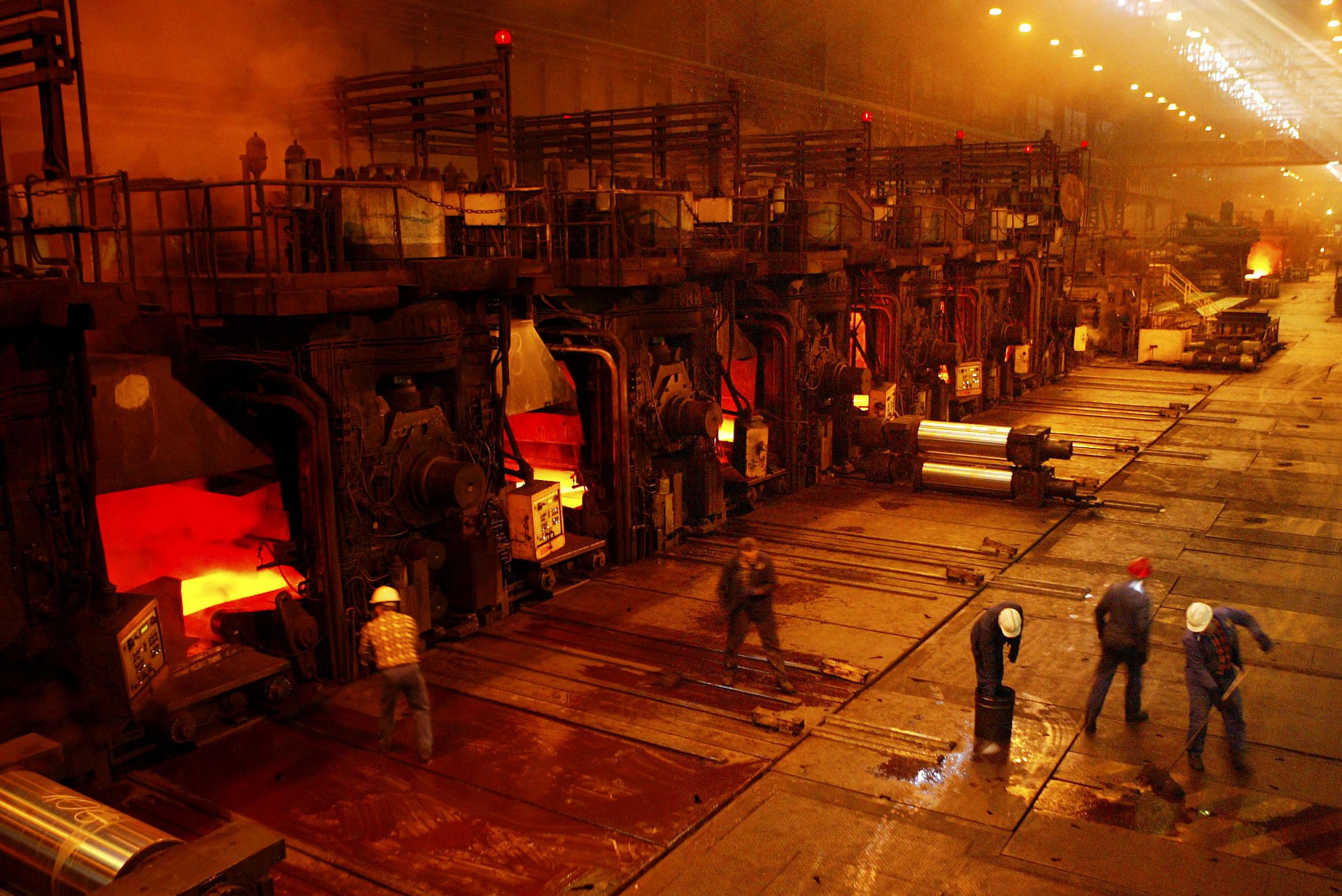
And what of the steelworks? In the years immediately after the war, the Soviet Union was demanding that Poland increase its steel production and the most cost-efficient way to do this was to build huge plants.
And while the myth may endure that Nowa Huta was built to annoy the middle-class residents of Krakow, it’s more likely that the location was perfect for the steelworks, with the river supplying water and major railway lines that could bring raw materials and transport away the finished steel already passing through the area. The displaced residents of the farming villages demolished to make way for the town and factory might disagree but the prosperity the foundries brought to Nowa Huta would deflect any criticism of the communists’ land grab.
At its zenith the 1,000 hectare-plus site was providing work for 38,000 people who produced 7 million tons of steel annually, much of it forged in Europe’s largest blast furnace. Most of it was transported directly to the Soviet Union on a wide-gauge railway built especially to carry the weight. Health and safety was pretty much ignored and injury was a semi-regular occurrence but it brought prosperity to the town right though until the 1970s. At first it lived up to its intention of forging both steel and a socialist future.
“There were ties. People worked together and took holidays together. We went to the park together and played football together. Our lives were bound up in Nowa Huta and so were our children’s. We all knew each other and took care of each other and our community,” recalls Patrycja Borkowska, 71, a retired public transport worker.
Our lives were bound up in Nowa Huta and so were our children’s. We all knew each other and took care of each other and our community
Shops were full, sports and cultural associations had huge memberships and local workers’ canteens were providing meals to thousands of families. No wonder Castro wanted to see it before touring boring old Krakow. Soviet premier Nikita Khrushchev and delegates from other socialist countries visited regularly to see the achievements of the factory and its workers.
Indicative of its importance are two more architectural masterpieces of Nowa Huta – the twin administrative buildings of the foundry, sometimes called the “Doge’s Palaces” because they resemble their Venetian renaissance counterpart. They are huge and unmissable from trams 4 or 22.
But through the 1980s socialist economies began to struggle and demand for steel slowed markedly. The rise of Lech Wałesa and his trade union Solidarnosc saw Nowa Huta cement itself as a hotbed of opposition to the communist government – witness the city’s fight to erect the Arka Pana church.
Two-thirds of the workforce at the steel plant were members of the union and battles between police and protesters became commonplace. When eastern European communism was overthrown in 1989 and an uneasy and tortuous shift to a market economy was invoked, the steelworks were shown to be unprofitable. In many ways by protesting against the government that employed them, the steelworkers had politicised themselves out of a job.
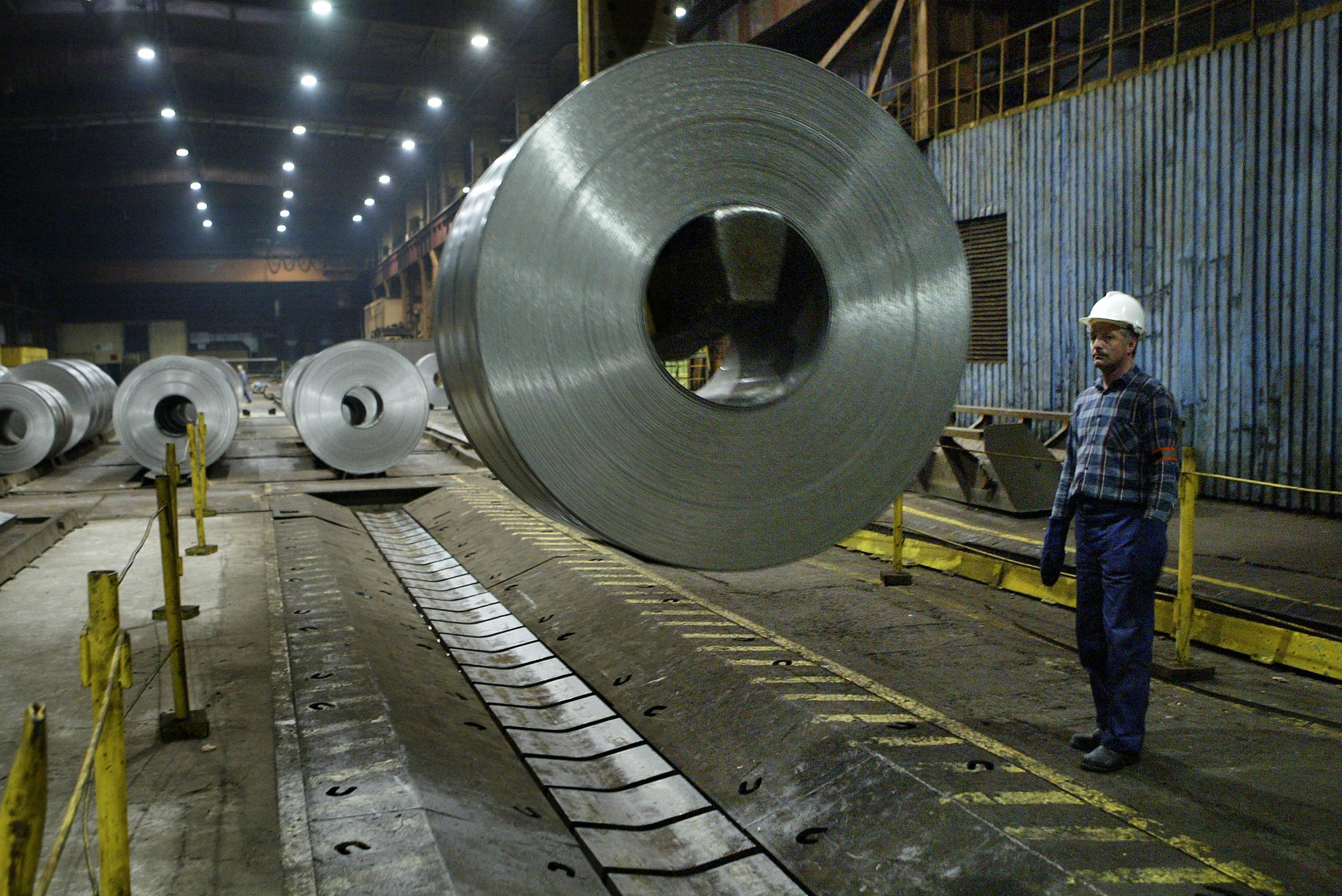
And the factory’s huge size was also its weakness, making it hard to adapt to modern usage. Much of it was closed and the name changed to Tadeusz Sendzimir Steelworks. It now has a foreign owner and only employs around 4000 workers. There was even talk of razing Nowa Huta completely and although it didn’t happen many people, often young and educated, began leaving.
Around the steelworks today, weeds grow through the concrete and there are miles of abandoned and rusting rail lines. Factory buildings have broken or boarded up windows. Gates are closed with rusty padlocks and even the barbed wire is crumbling.
And so Nowa Huta earned its unwanted reputation, the one where it is a dodgy place to spend time, and why would you want to spend time there anyway? “If you have a job, you don’t know for how long,” says Borkowska listlessly. “And it’s difficult to support a family if you have no security. As for any leisure activities… these were once provided by the state. Now everything costs money. People just stay home rather than walk in the park or meet at Plac Centralny. Our drive and self-sufficiency has just drained away. Young people jump on a tram to Krakow if they want entertainment.”
It’s hard to support a family if you have no security. As for leisure activities… these were once provided by the state. Now everything costs money
So is there hope for this city that dared to dream? This city whose formerly communist streets are now named after Pope John Paul II and the Solidarnosc trade union? Possibly. Recent evidence suggests that because the accommodation is affordable compared to nearby Krakow, Nowa Huta is among the top local choices for young people and families buying their first apartment. It has all the amenities, as planned by the architects in the 1940s and 1950s, and has green spaces aplenty.
New businesses have opened, including large tobacco and cement factories and new software companies. And tourism has taken hold, prompted by people who wish to learn about the communist history of Poland – the original socialist realist part of town makes it unique (an overused word but here it’s true) and discussions have taken place about the centre being included on the Unesco World Heritage list, just like its near-neighbour Krakow old town. The newly opened Museum of Nowa Huta is in the former Swiatowid cinema, one of the original socialist realism buildings.
What is known as “communist heritage tourism” has seen dramatic growth recently and while this poses dilemmas ranging from, at worst, tourists gawping with a zoo-like fascination at a past that is still very much part of people’s lived experience to, at best, genuine historical interest in helping to preserve an important part of 20th-century history, in Nowa Huta the two collide.
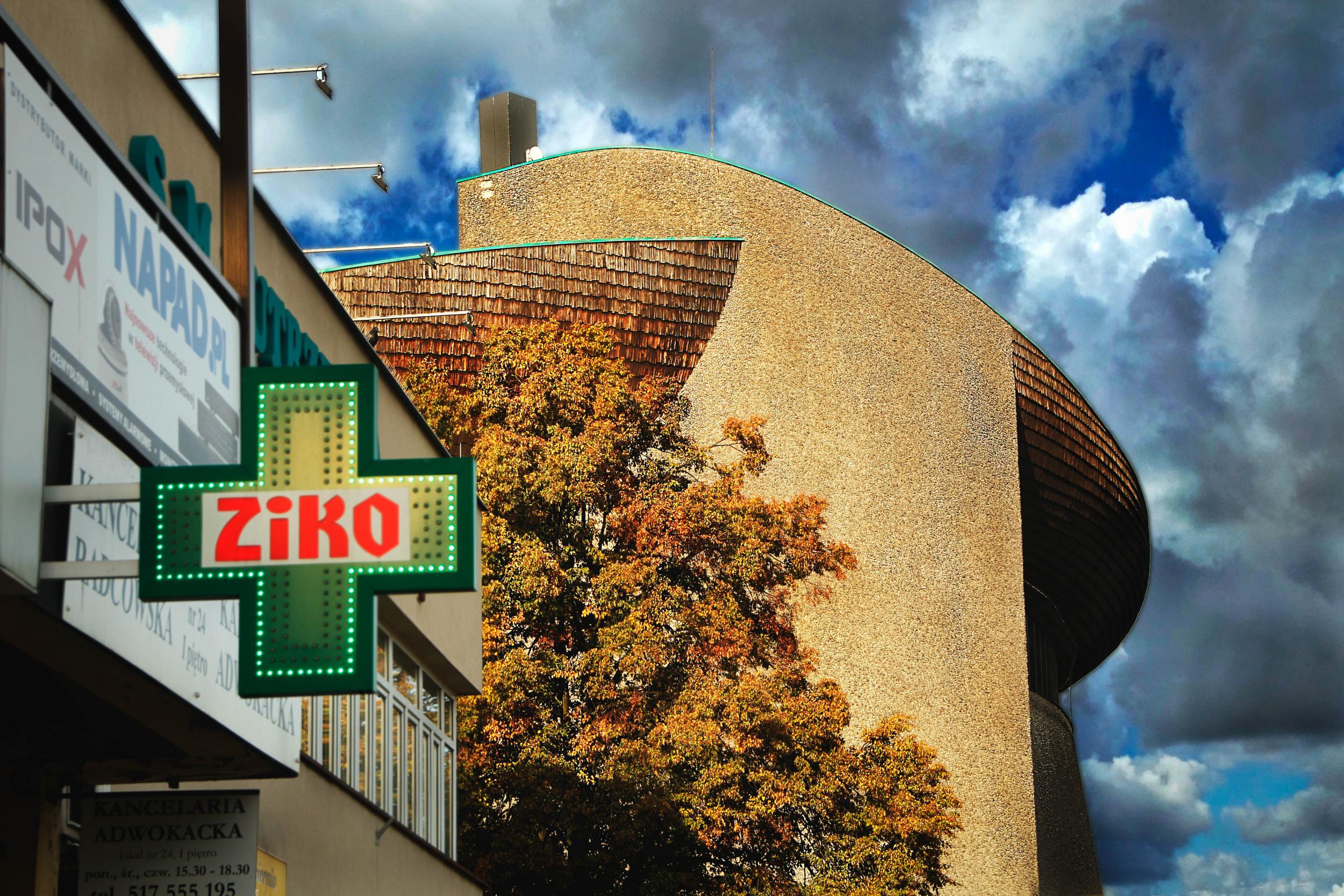
Nowa Huta is not a museum, people live their ordinary lives there. While some residents may resent being part of what some feel is a historical sideshow viewed from the window of a restored Trabant car, others see it as an economic opportunity. And of course, there is further irony that a city of communist ideology is now visited by cash-wielding tourists from capitalist countries.
But let’s never forget that when Nowa Huta went up, it was a place people aspired to live in. After the deprivations of war, young people actually travelled to Nowa Huta to help build it. And they did it from scratch in just a few short years. They were not coerced by an oppressive government and its construction provided work – and new skills – for thousands.
It was idealistic, but at a time when idealism hadn’t been thrashed to a corrupt, fleshless torso. The story goes that one bricklayer, Piotr Ozanski, laid 33,000 bricks in one day. Many elderly residents still remember the words to “O Nowej to Hucie Piosenka” (This Song is about Nowa Huta), a 1950s piece of propaganda written as the city was being constructed. To these people, most of whom stayed to live in the town and work in the steel factory, Nowa Huta changed their lives, and for the better. As Ozanski said back in 1976: “I can’t imagine leaving. I built this city with my own hands.”
Visit today and hop off the tram at Plac Centralny and face towards Aleja Roz, to get a sense of what the city planners had in mind. In the summer sunshine or after a dusting of winter snow it is still an impressive sight, and not at all unattractive, the fan of broad avenues and impressive Stalinist buildings still inspires.
It may have been social engineering writ large but the intent was not one of oppression. As Alison Stenning, professor of Social & Economic Geography at Newcastle University and expert on the Polish hub, has noted: “It is an unrivalled example of socialist urban planning” and quite splendid.
Nowa Huta liberated war-weary workers and was meant to give them a home worth living in. And for a while – and for some – it did. But when the gloomy clouds block out the sun the vista is a little more threadbare, the grass in the square browning and the paintwork on the buildings crumbling or missing. Yet the failure to finish the task and the subsequent post-communist decline is more down to successive governments than it is to the architects and their grand but unfulfilled design.
So is it like a Polish Milton Keynes? To draw a comparison either way would be to offend at least one town. Both are postwar new towns and there, one has to conclude, the similarities pretty much end, for better or worse.
Join our commenting forum
Join thought-provoking conversations, follow other Independent readers and see their replies
Comments